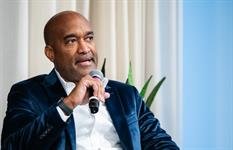
Plus: The benefits of in-house influencers; NASA partners with Netflix to expand audience.
Southwest Airlines is shaking up its core offerings in a major way — and that requires a major executive comms strategy. Among the biggest changes: An end to their signature first come, first served boarding process and beginning to charge for checked bags. They’re major moves that alter the airline’s key points of differentiation and are causing waves with loyal fliers.
CEO Bob Jordan has been one of the major messengers for this change. He sat down for a Q&A with the New York Times — not an edited piece where quotes would be cut up and interspersed with context, but rather a (condensed, clarified) transcription of questions and answers. It’s a format that allows well-prepared executives to get their answers out in a clearer, longer form, but which also opens them up to tough questions.
Here’s how Jordan tackled some of the hot-button topics the Times reporter threw his way:
On unhappy customers: “You have to keep talking because sometimes people don’t understand what you’re doing. What I find is that once folks know where we’re headed, they’re very excited. I think you just have to play through this period of change because change is hard.” Jordan also said that employees were “excited” about the seating changes, as they’d no longer be in the position of having to police seating.
On bag fees: “The move to bag fees is really about choice.”
On activist investor Elliott Management: “We had an investor day on Sept. 26 where we laid out assigned seating, extra leg room and a number of things. All of that strategy was well underway, way ahead of Elliott.”
On what co-founder Herb Kelleher would make of the changes: “What’s funny is that Herb would say: ‘We’re never going to change boarding. We are never going to go into a big airport like LaGuardia. We’re never going to have a frequent-flier program.’ And then we would do it.”
Why it matters: This is a tough interview, answering straight questions from a reporter and knowing they’re going to be published moreor less verbatim. Jordan was clearly well-prepared with his talking points, weaving together multiple narratives with skill. He didn’t just talk about why changing seating was good for customers — he brought in employees. He was ready to assert the company’s dominance over Elliott Management, even describing his own management style as evolving to become more “command-and-control” — a clear assertion that he, not Elliott, remains at the helm, albeit in a polite way.
The Times reporter teed him up beautifully for the Herb Kelleher question, and Jordan took advantage of it, establishing that he knew Kelleher and that Kelleher frequently changed aspects of the airline once seen as core to its identity. Leaning on the company’s legacy and establishing change as part of their DNA is helpful in times of upheaval.
Did all the answers land? Well, it’s doubtful most fliers will see being charged for bags as a good thing because they can choose to pay for it. However, sometimes you have to communicate things that may be unpopular, and tying it to the positive attribute of choice is about as good as it gets.
This one interview won’t solve all of Southwest’s issues — as Jordan noted, he has to keep hammering this point home, and will for years. But there’s plenty communicators can learn from a close read of this well-prepared exec.
Editor’s Top Reads:
- Working with an outside influencer is great. But more and more organizations are turning to in-house influencers who know their product intimately, can work directly on-site in the company’s facilities every day and are on the official payroll. The New York Times details this trend through home goods company Dusen Dusen, who employs 28-year-old Sarah Tang as an in-house content creator. Not so long ago, this role might have simply been called a social media manager, but now Tang takes an active role on camera, not just promoting the company but acting as a familiar friend … who also promotes the company. Dusen Dusen even has a mock apartment set up in their offices, complete with a bed and a kitchen, for Tang’s filming. It offers many of the benefits of influencer content — an authentic feel, a consistent personality — but without the slog of bringing a creator up to speed every time. Of course, it also doesn’t bring the built-in audience a contracted creator can provide, and you may have an issue when your employee moves on to a new role. But this approach can bring content that feels more relatable and authentic, even if the set is fake.
- In a clever PR move, NASA is making much of its content, already available for free on its website, on Netflix. This includes footage of space walks, rocket launches and livestreams from the International Space Station, NASA said in a press release. Why is it clever to offer free content on a paid service? Because people go to Netflix looking for education and entertainment. Unless you’re already a huge space fan, you probably aren’t cozying up with NASA.gov when you want something to watch. By putting its existing content in a new place, NASA can reach new audiences at a pivotal moment as it plans its Artemis mission to return humankind to the moon. What new distribution channels can you find for your existing content?
- It’s tariff time. Again. Some more. Dozens of temporary tariff deals are set to expire Wednesday unless President Donald Trump pushes those deadlines back again. Despite promises that 90 deals would be struck, only three have been publicly announced, and many details remain uncertain. Now, Trump says that rather than negotiating, nations will be notified by letter of what their new tariff rate will be, a shift in earlier promises and conversations. At the moment, the situation is unsettled to say the least. By now, communicators know the drill: have statements ready, be prepared to pivot and then pivot again. Good luck.
Allison Carter is editorial director of PR Daily and Ragan.com. Follow her on LinkedIn.
The post The Scoop: How Southwest CEO tackled major change comms in New York Times interview appeared first on PR Daily.













